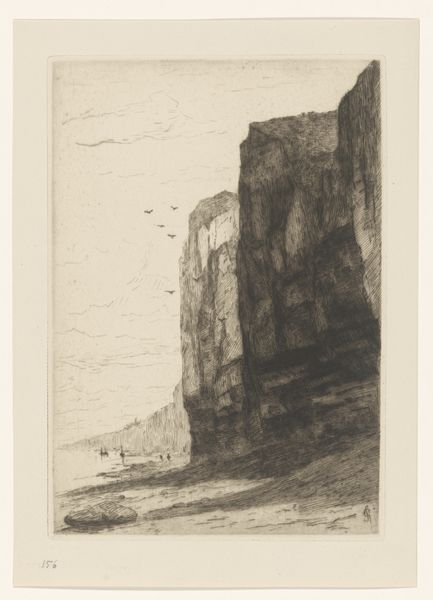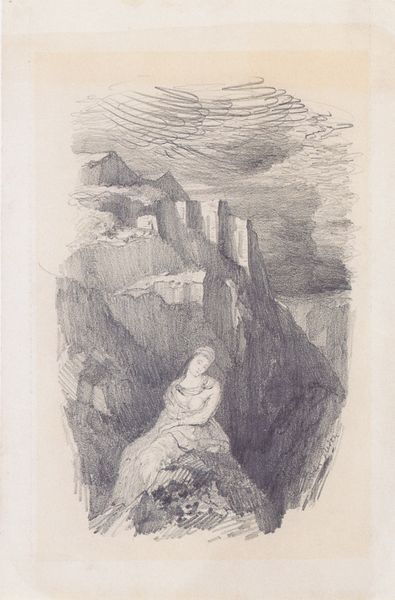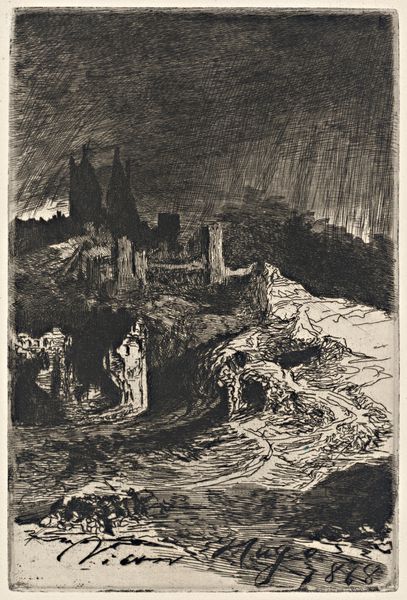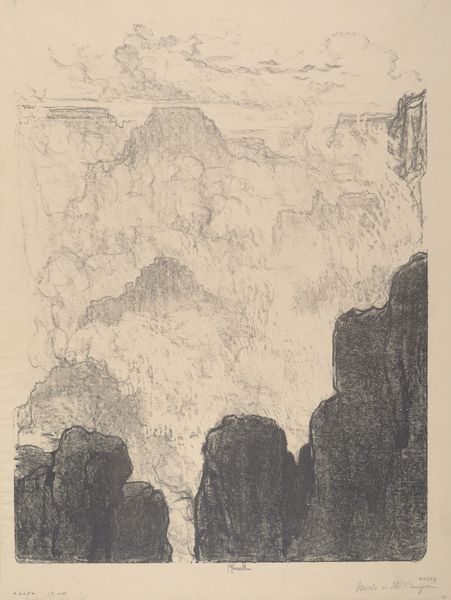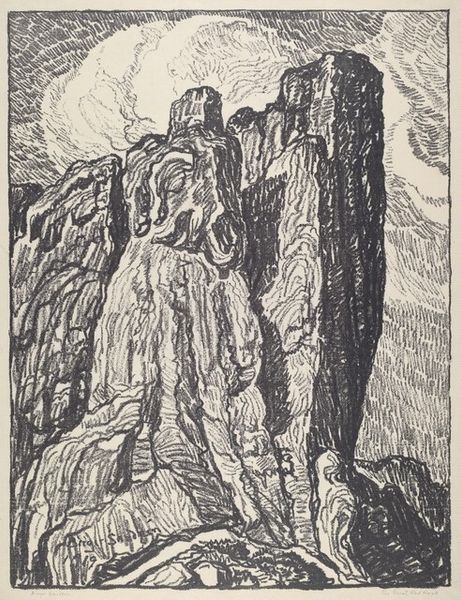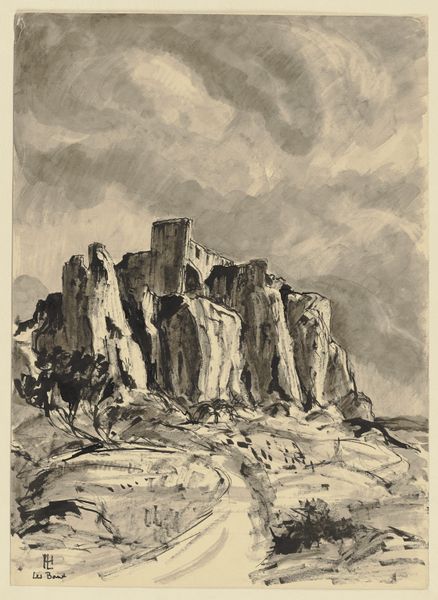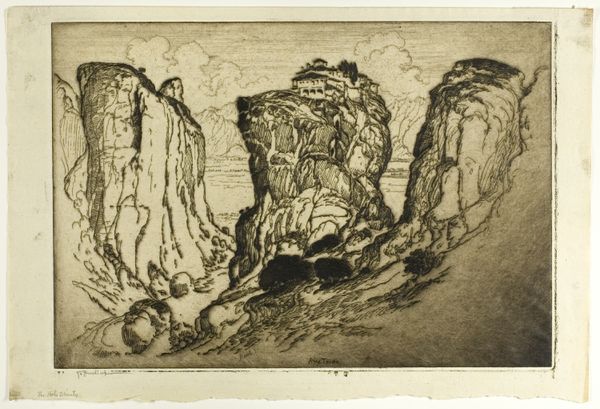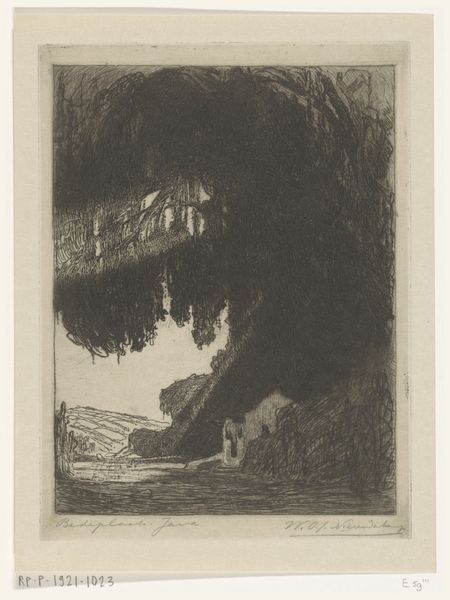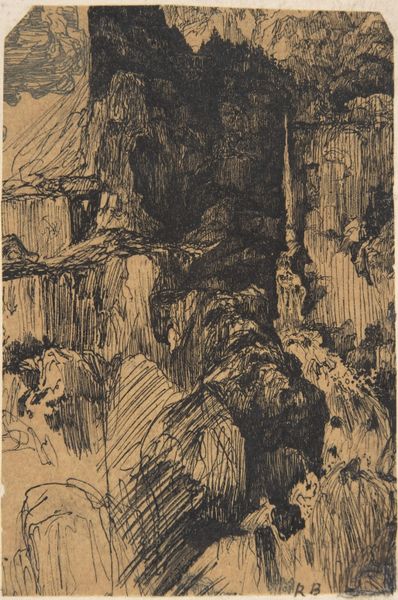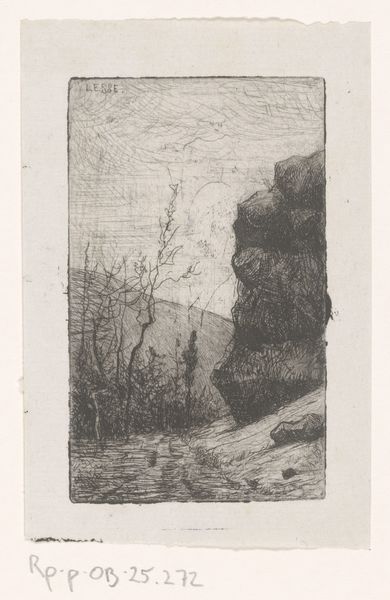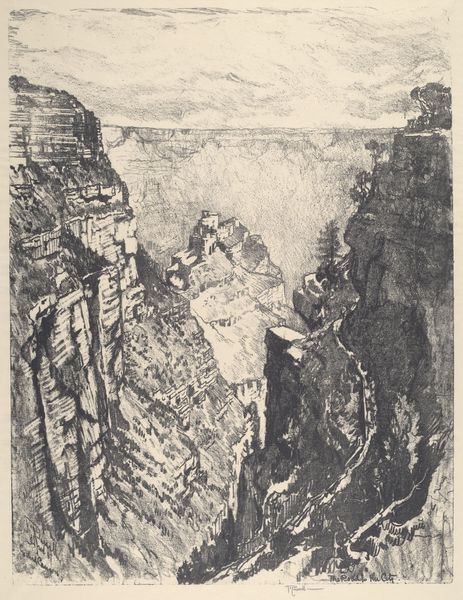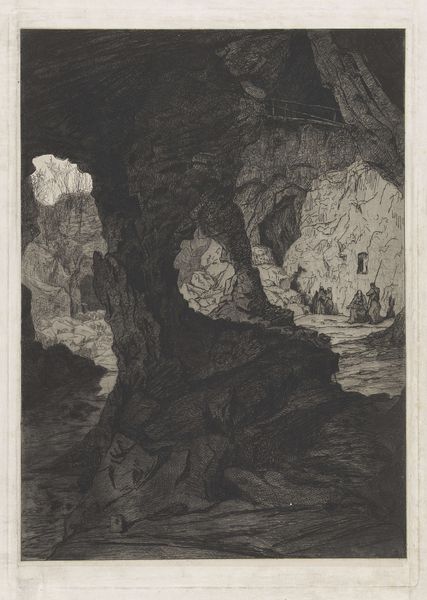
print, etching
# print
#
etching
#
landscape
#
geometric
#
line
Dimensions: plate: 14.92 × 11.27 cm (5 7/8 × 4 7/16 in.) sheet: 22.38 × 15.88 cm (8 13/16 × 6 1/4 in.)
Copyright: National Gallery of Art: CC0 1.0
George Elbert Burr created ‘The Little Canyon’ as an etching on paper. Burr's landscapes often emphasized the grandeur and stark beauty of the American West, and we can see it here in the dramatic canyon. The etching process itself is an interesting one. Burr would have covered a metal plate with a waxy, acid-resistant ground. Then, using a needle, he scratched away the ground to expose the metal beneath, creating the fine lines we see in the print. The plate was then immersed in acid, which bit into the exposed lines, deepening them. This process was repeated to achieve different tones and depths, before the plate was finally inked and printed. Look at the image closely, and you’ll see how this way of making determined the image. The density of lines gives the impression of the canyon walls, and the open areas create the wide sky above. The artistry lies in the control of the etching process, transforming the labor of repetitive, precise engraving into an image that invites contemplation. Burr’s work reminds us that even in mass-produced prints, the hand of the artist is critical.
Comments
No comments
Be the first to comment and join the conversation on the ultimate creative platform.

